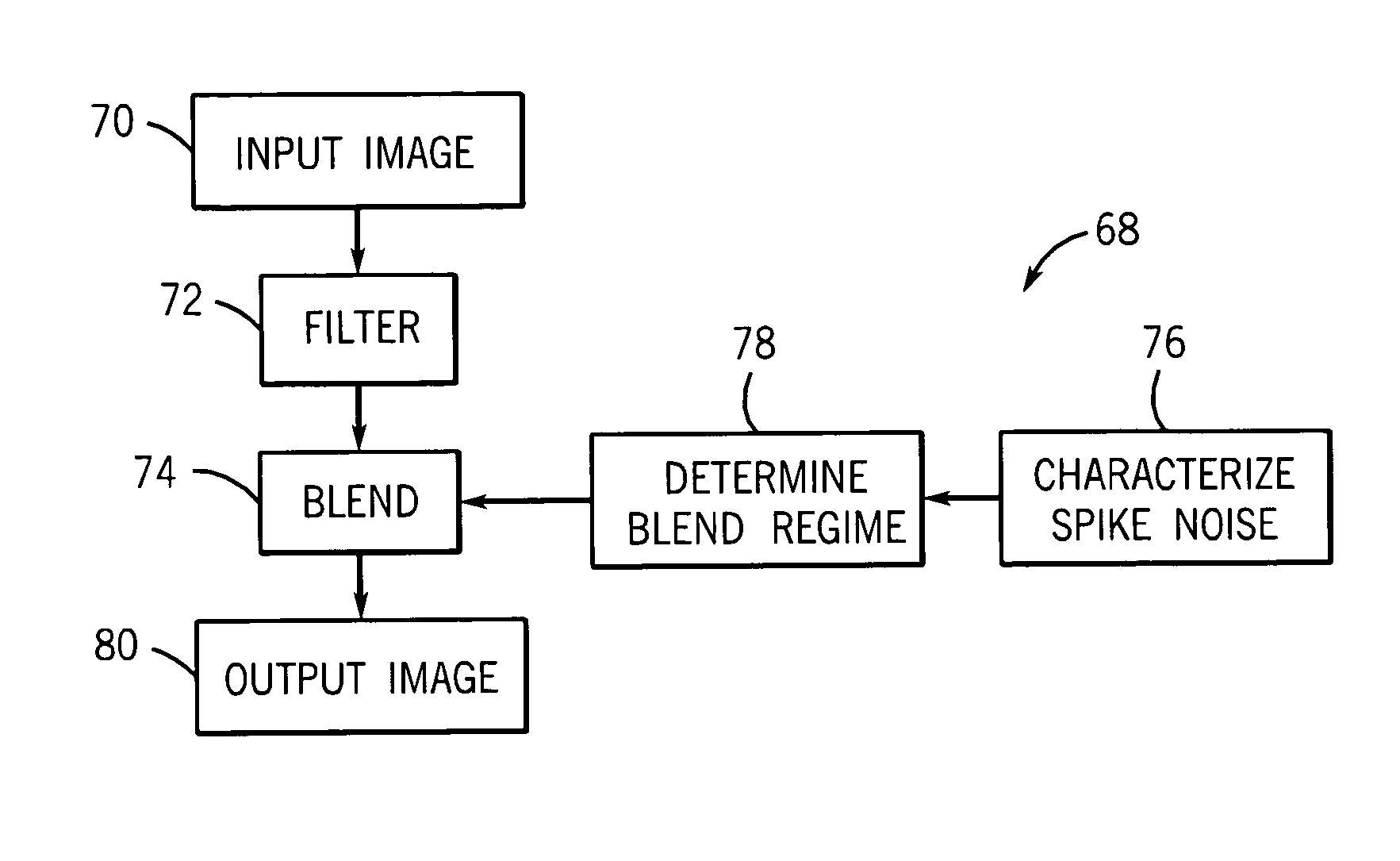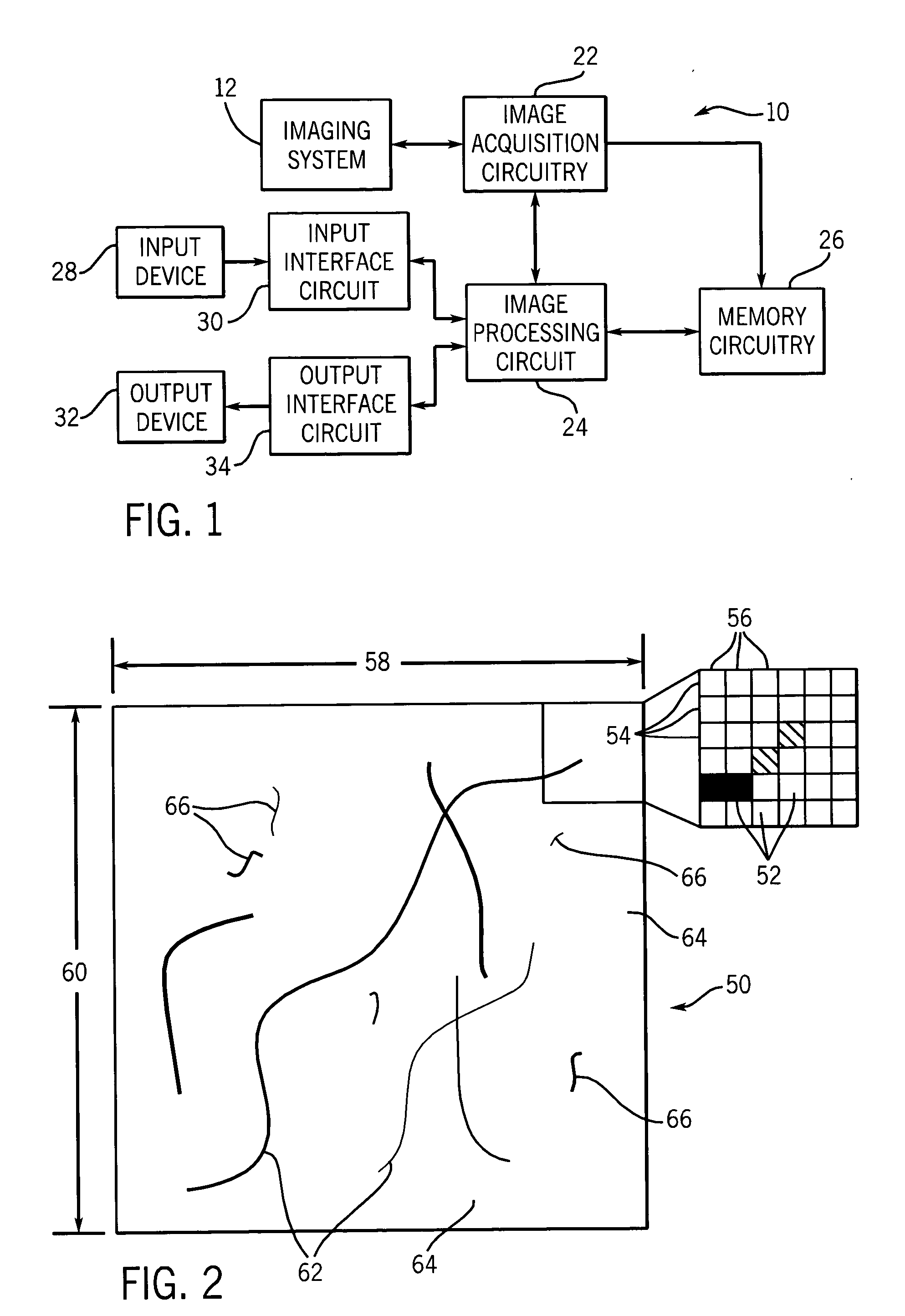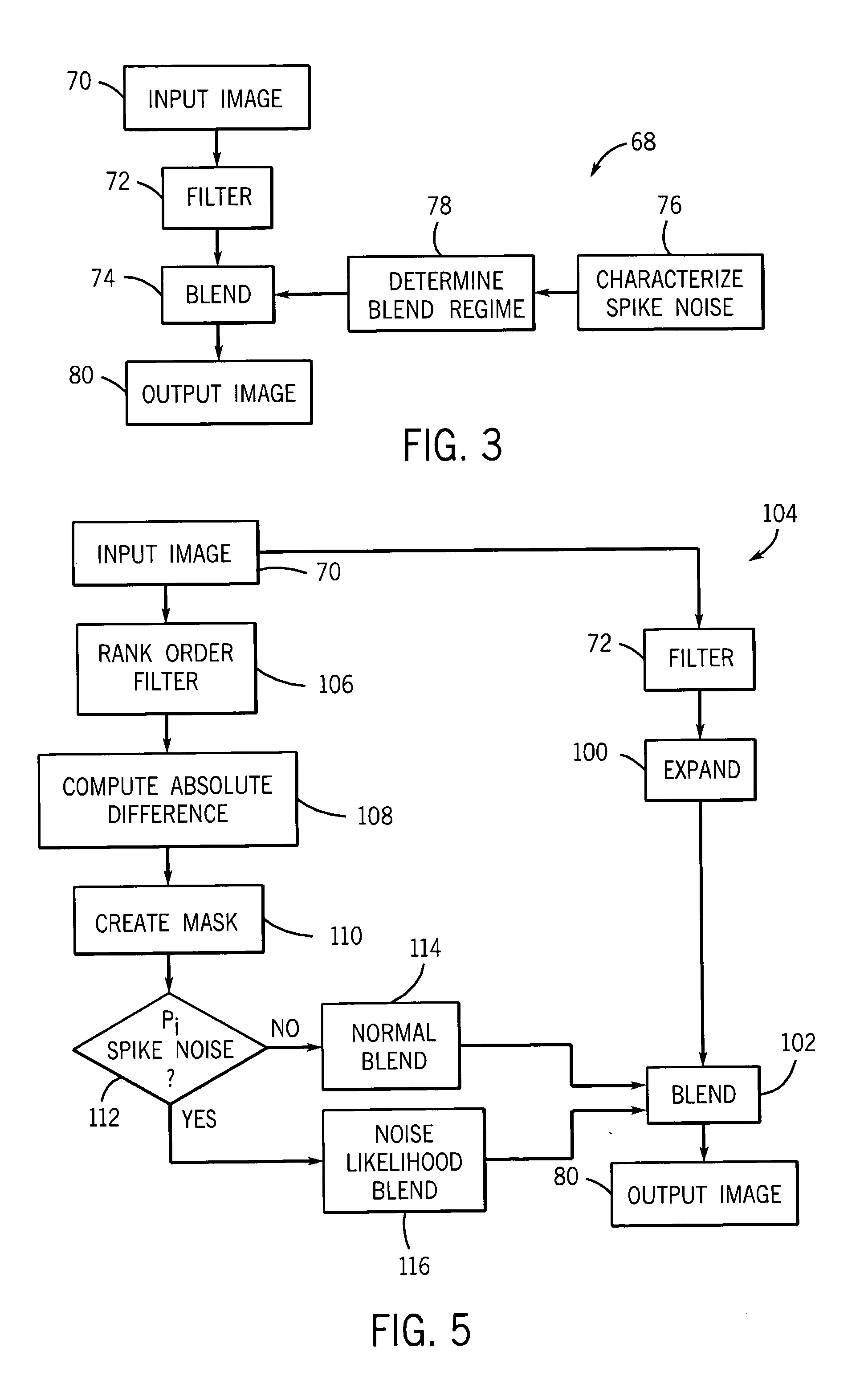Method for random point and patterned noise reduction in digital images
a digital image and random point technology, applied in the field of digital imaging and digital image enhancement techniques, can solve the problems of insufficient mitigation of point noise, image data directly acquired exhibits such noise in a readily visible manner, and acquired image data typically contain nois
- Summary
- Abstract
- Description
- Claims
- Application Information
AI Technical Summary
Problems solved by technology
Method used
Image
Examples
Embodiment Construction
[0017] Referring to FIG. 1, an imaging system 10 is depicted as including a scanner or data acquisition system 12 coupled to circuitry for acquiring and processing discrete pixel data. Signals sensed by the system 12 are encoded to provide digital values representative of the signals associated with specific locations on or in the subject, and are transmitted to the image acquisition circuitry 22. The image acquisition circuitry 22 also provides control signals for configuration and coordination of system operation during image acquisition. The image acquisition circuitry 22 transmits the encoded image signals to an image processing circuit 24. The image processing circuit 24 executes pre-established control logic routines stored within a memory circuit 26 to filter and condition the signals received from the image acquisition circuitry 22 to provide digital values representative of each pixel in the acquired image. These values are then stored in the memory circuit 26 for subsequen...
PUM
 Login to View More
Login to View More Abstract
Description
Claims
Application Information
 Login to View More
Login to View More - R&D
- Intellectual Property
- Life Sciences
- Materials
- Tech Scout
- Unparalleled Data Quality
- Higher Quality Content
- 60% Fewer Hallucinations
Browse by: Latest US Patents, China's latest patents, Technical Efficacy Thesaurus, Application Domain, Technology Topic, Popular Technical Reports.
© 2025 PatSnap. All rights reserved.Legal|Privacy policy|Modern Slavery Act Transparency Statement|Sitemap|About US| Contact US: help@patsnap.com



